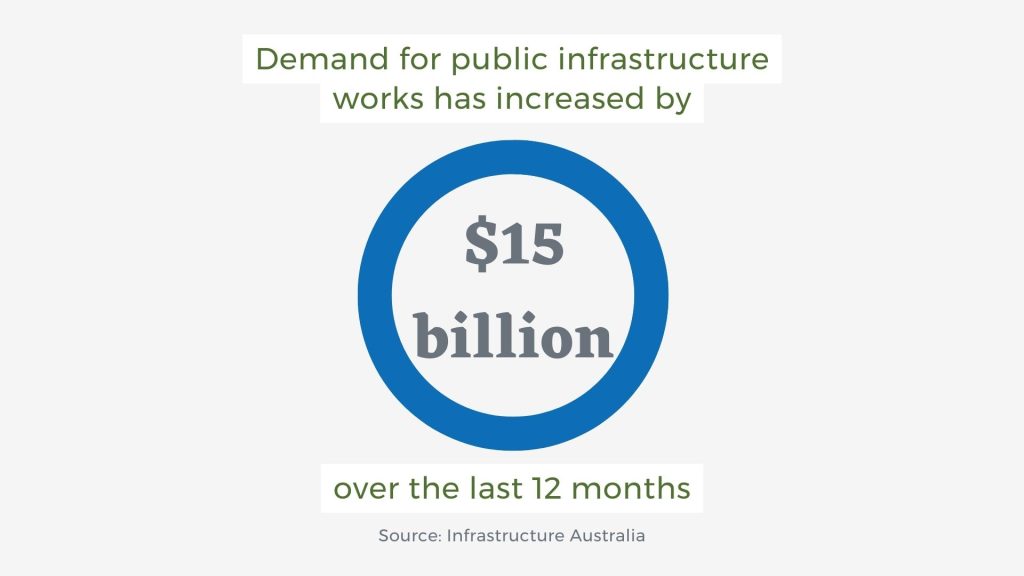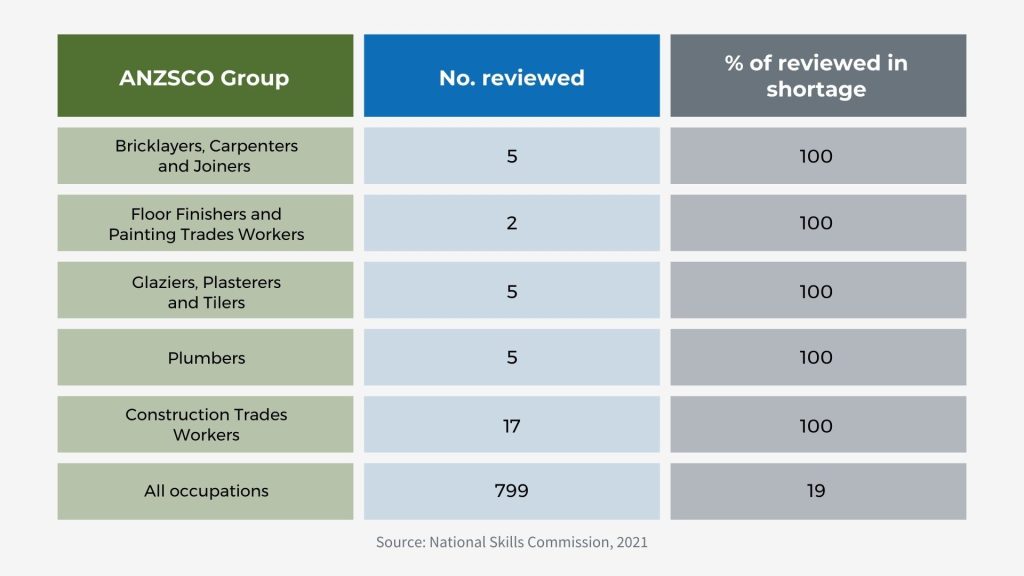If collaborative contracting leads to less conflict and a happier workplace, could it reduce turnover and help to tackle the labour shortage in the construction industry?
The recent high-profile collapse of major construction firm Clough has sparked discussion about whether it’s time to rethink traditional contract arrangements.
Clough was grappling with spiraling project costs and labour shortages, among other issues, when it went into voluntary administration in December.
The announcement followed a series of other construction firms going under in recent times.
While the construction industry has faced an increase in the number of infrastructure projects, the skilled labour shortage is placing pressure on companies and pushing project deadlines out.

The Australian government’s 2021 Skills Priority List found that 100 per cent of all groups surveyed for the construction industry were experiencing a shortage of workers, compared to 19 per cent for all occupations.

Skilled labour shortages, as well as supply chain issues, poor project planning, increases in extreme weather and escalating cost of commodities have contributed towards pushes for reform, and a rise in the private contracting market seeking more collaborative contracting models.
“All of these factors are placing pressure on contractors,” says Scott Kindred, Director and Canberra Lead at ConnellGriffin, who provides commercial advice to government and non-government clients in the infrastructure sector and has previously worked in the construction contracting industry.
“There is clearly now a preference towards a risk-sharing model that requires a collaborative approach between the client and contractor.”
Adopting a collaborative approach has many attributes including, for example, allocating risk to the party best placed to manage it, risk sharing, mechanisms for rise and fall, incentive regimes, robust discussions around relief events and establishing an environment of trust and credibility.
It can also present additional benefits to the client who has more visibility and control over the project’s delivery.
“Rather than being kept at arm’s length, a collaborative contracting model typically integrates the client into the project delivery process,” says Kindred.
“They have more involvement in resolving key issues. Everyone is focused on trying to get the most efficient solution to a problem as quickly as possible. Commercial implications are managed independently of the issue resolution process which will typically drive a better project outcome in terms of time, cost, quality and safety.”
Increasing job satisfaction and retention
Collaborative contracting has gained particularly rapid uptake across the east coast of Australia in recent years.
“In NSW, we’re seeing collaborative contracts being implemented on large and complex water, road, rail and energy projects. In Victoria, organisations are starting to use Incentivised Target Cost models, one kind of collaborative contracting model, on smaller contracts and relatively straightforward projects,” says Phoebe Theodore, Director at ConnellGriffin, who has held commercial lead roles on large infrastructure projects across Australia.
Clients and contractors are also realising the benefits of a more collaborative and less adversarial model.
“Traditional construction environments can be very high pressure, and issues need to be resolved quickly to maintain project momentum. Collaborative project environments tend to be much more comfortable places in which to cooperate and overcome challenges. They generally give rise to a happier workplace,” says Kindred.
Theodore says that burnout is often a bigger risk on projects that aren’t collaborative.
“An environment where parties are ‘dug into their respective trenches’ can take a huge toll on morale.”
Creating a supportive and safe workplace culture is particularly critical in the construction industry. Without this there can be a high employee turnover – a widespread issue that many construction companies have been grappling with in recent years.
In the Labour Turnover Factsheet for 2020, the Australian Industry Group (Ai Group) placed construction as the industry with the fifth highest employee turnover rate.
“Collaborative contracting can contribute to improving overall job satisfaction. We often hear that staff enjoy coming to work everyday,” says Theodore.
Essential foundations for a collaborative contracting model
Agreeing upon a commercial framework and a set of core principles for how the parties will work together on a ‘best for project basis’ is a critical starting point for any collaborative contracting model.
“The commercial mechanisms around risk allocation, payment mechanisms and incentive regimes need to be considered and well-established at the time of transaction,” says Kindred.
Equally important is establishing a foundation of trust and open communication.
“This generally requires frank discussions about issues and a transparent approach to information sharing between the parties, including cost and risk information. That will help to build credibility and trust and lead to effective collaboration,” says Theodore.
While collaborative contracting generally starts with good intentions, it’s when issues arise that a collaborative mindset is often put to the test.
“In those circumstances, management needs to reinforce the core principles established at the outset and show leadership by reinforcing collaboration when working together towards a resolution,” says Theodore.
“If you don’t have leaders who embrace collaboration and ‘best for project’ decision making, it can railroad the process and erode credibility and trust in terms of how those parties are working together.”
It’s only through the organisational culture supporting collaborative contracting that the benefits of this model – improved job satisfaction and retention, and successfully delivering on the increased pipeline of infrastructure projects – will come to fruition.
Visit the ConnellGriffin website for case studies of collaborative contracting in action or email: skindred@connellgriffin.com or ptheodore@connellgriffin.com to find out how collaborative contracting may benefit your infrastructure project.

